SaaS Analytics
“Over the next five years up to 2025, global data creation is projected to grow to more than 180 zettabytes.” -- Statista.
How are you leveraging your data and connecting touchpoints?
What is SaaS Analytics?
SaaS Analytics is the process used by SaaS companies to analyze user engagement across all touch-points. Companies use SaaS Analytics to analyze users' behavior throughout their journey to reduce churn, increase customer engagement, and ultimately grow their recurring revenue.
Unify Your Data, Empower Your People
Data has transformed the connection with our users. We can identify problems as they’re happening and engage in real-time. We know who they are and what success looks like for them. But, something happened as we marched into this data-centric era. The number of available data sources exploded, but our ability to understand the end-to-end experience remained relatively siloed.
Woopra solves for this challenge. Designed for you to easily integrate with and, most important, fully understand the total customer experience. Because every engagement matters and every journey is unique.

Apps. How Work Gets Done.
Seamlessly Integrate your Favorite Tools
Apps have revolutionized the way we work, streamlining our ability to manage, innovate and scale with efficiency.
SaaS companies love our integrations with CRMs like Salesforce, marketing automation tools like Marketo and support tools like Zendesk. Each integration boasts a suite of automation, allowing you to both visualize and take real-time action as users engage with your brand.
Browse Integrations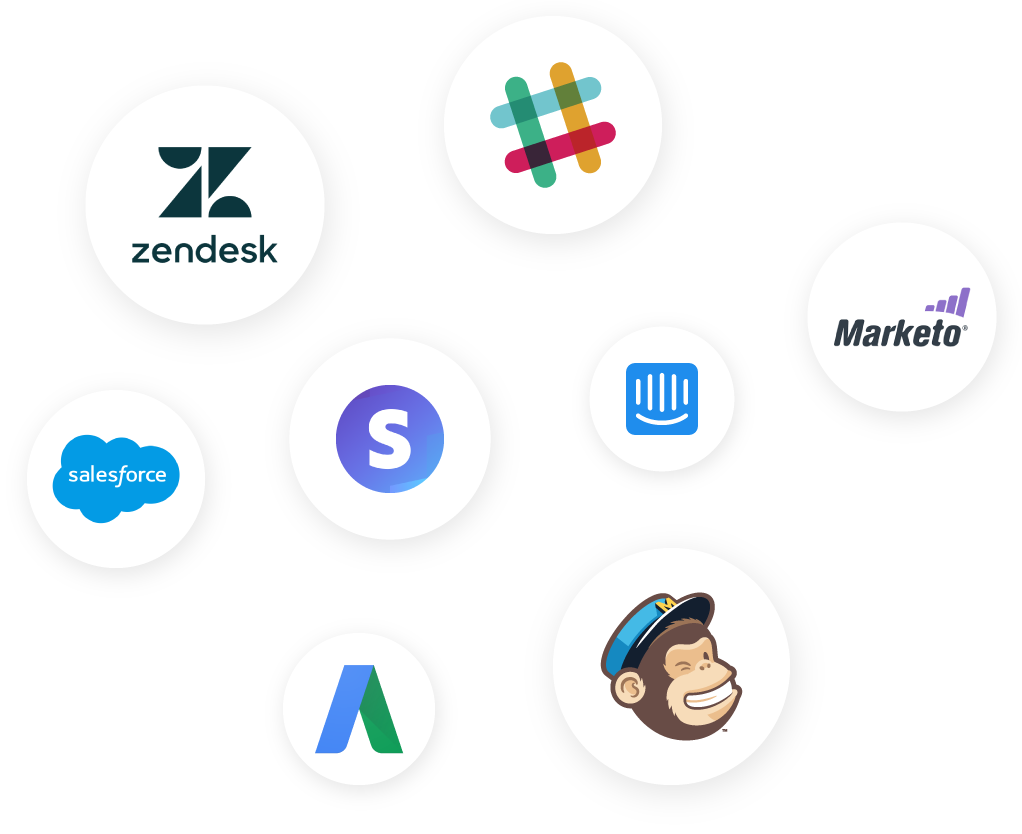
Journey Reports
Omni-Channel User Onboarding SaaS Analytics
The old method of analyzing linear funnels doesn't align with the modern user experience. Instead, Woopra's Journey Reports are non-linear, omnichannel, layered with segmentation and optional steps. So whether users are dropping off due to a marketing message, a product feature, a bug or support issue - you'll know where it happens and how to address it.
Learn More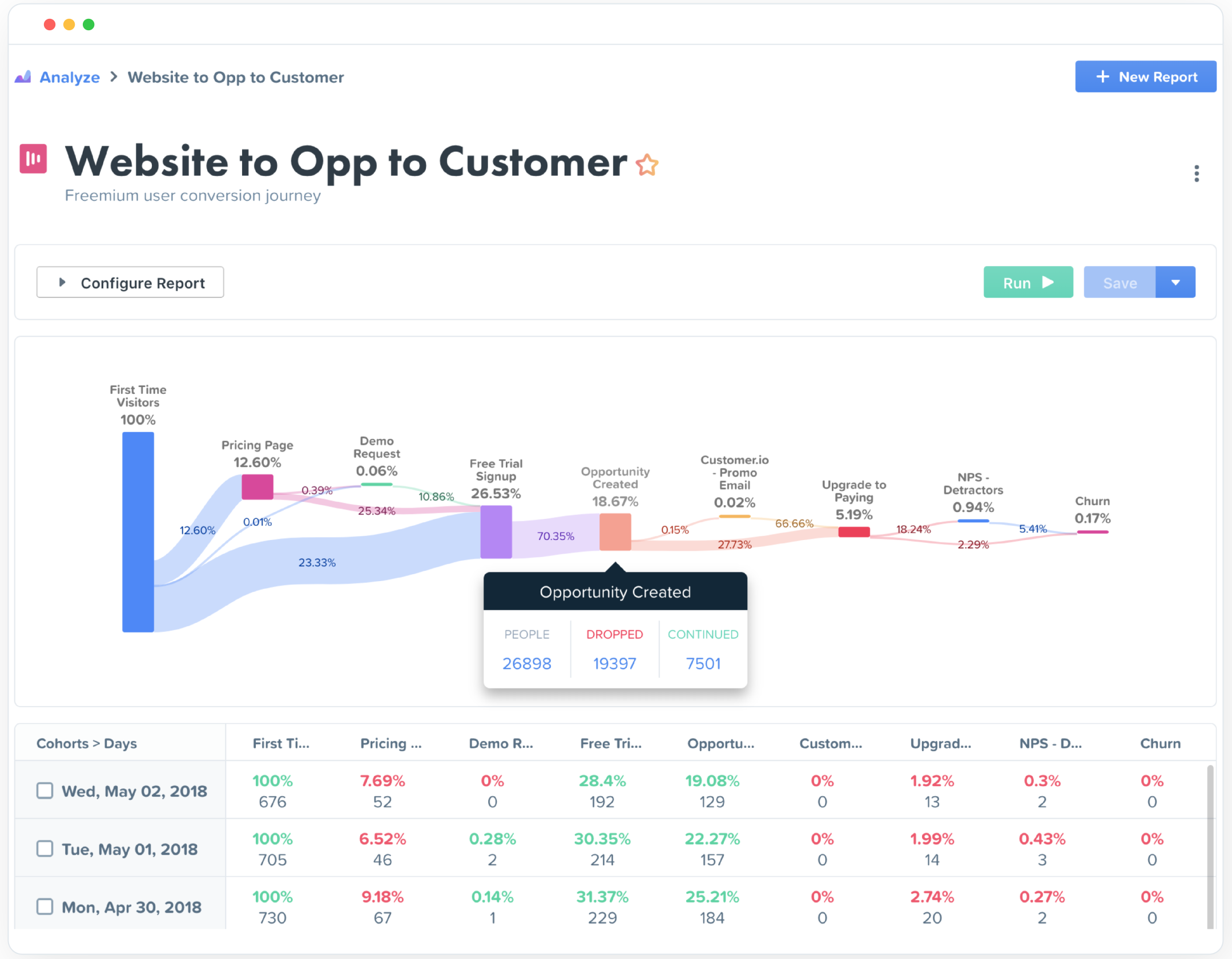
Trends Subscription Reports
Measure Subscriptions and Key App Usage
SaaS companies live and die by their subscription metrics. Woopra delivers SaaS analytics to track subscription updates and automatically generate reports on total subscription changes. Add columns to include new ARR, old ARR, the delta, package name and more! Always know where you stand and stay ahead of churn will real-time subscription data at your fingertips.
Learn More“80% of your company's future revenue will come from just 20% of your existing customers.”
Gartner
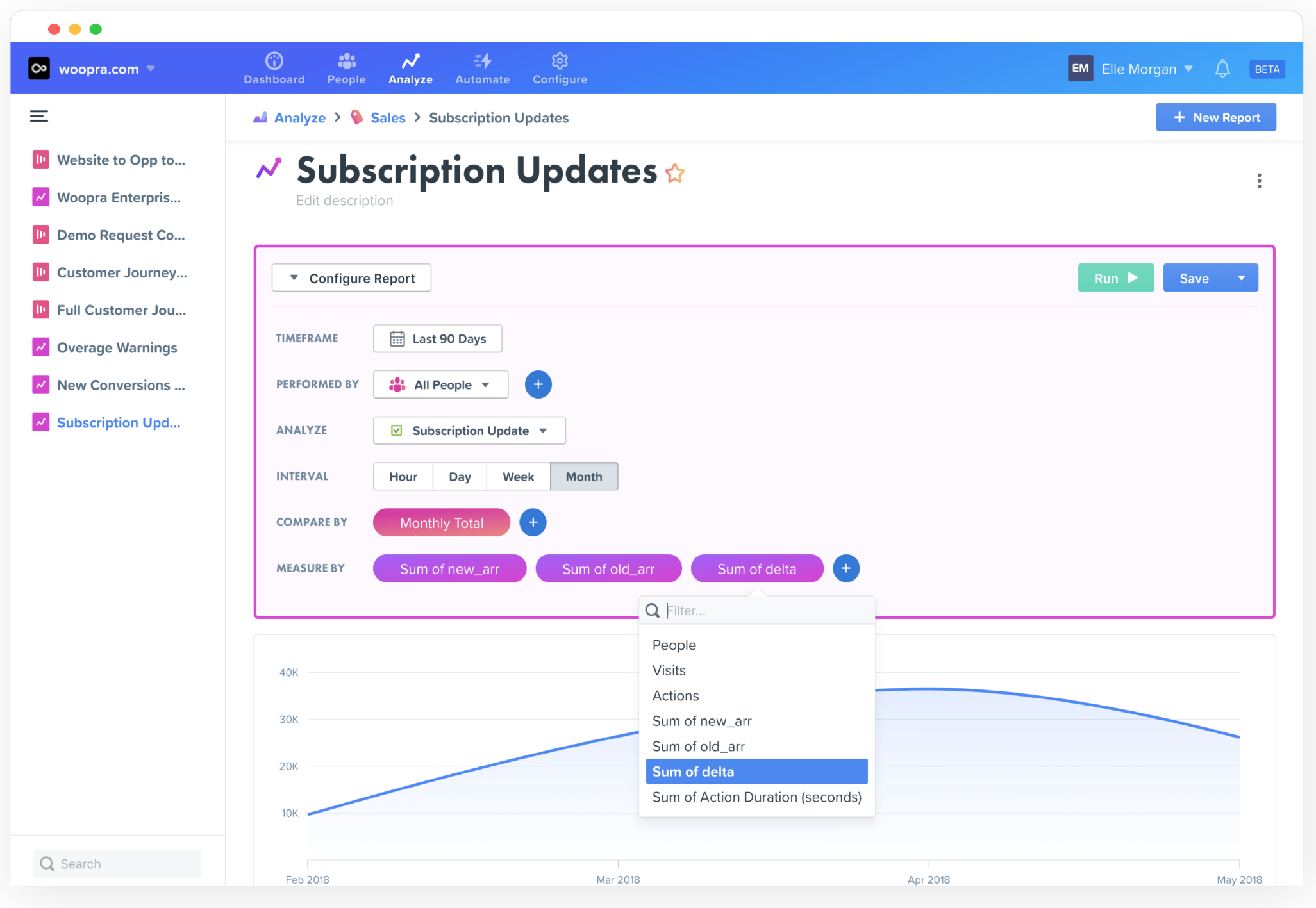
Full-Funnel Campaign Attribution with Journey Reports
First and last click attribution no longer suffice. With Woopra, measure the campaigns that drive new users to your product AND all subsequent actions.
- Compare product engagement with specific acquisition channels.
- See how usage evolves, what channels drive conversions and, of those conversions, the corresponding retention rates.
- Expose the ROI of each user touchpoint — be it on a push notification, an email, an ad, in-app campaign or web event.
- Optimize campaigns to deliver lifelong customers, not clicks and impressions.
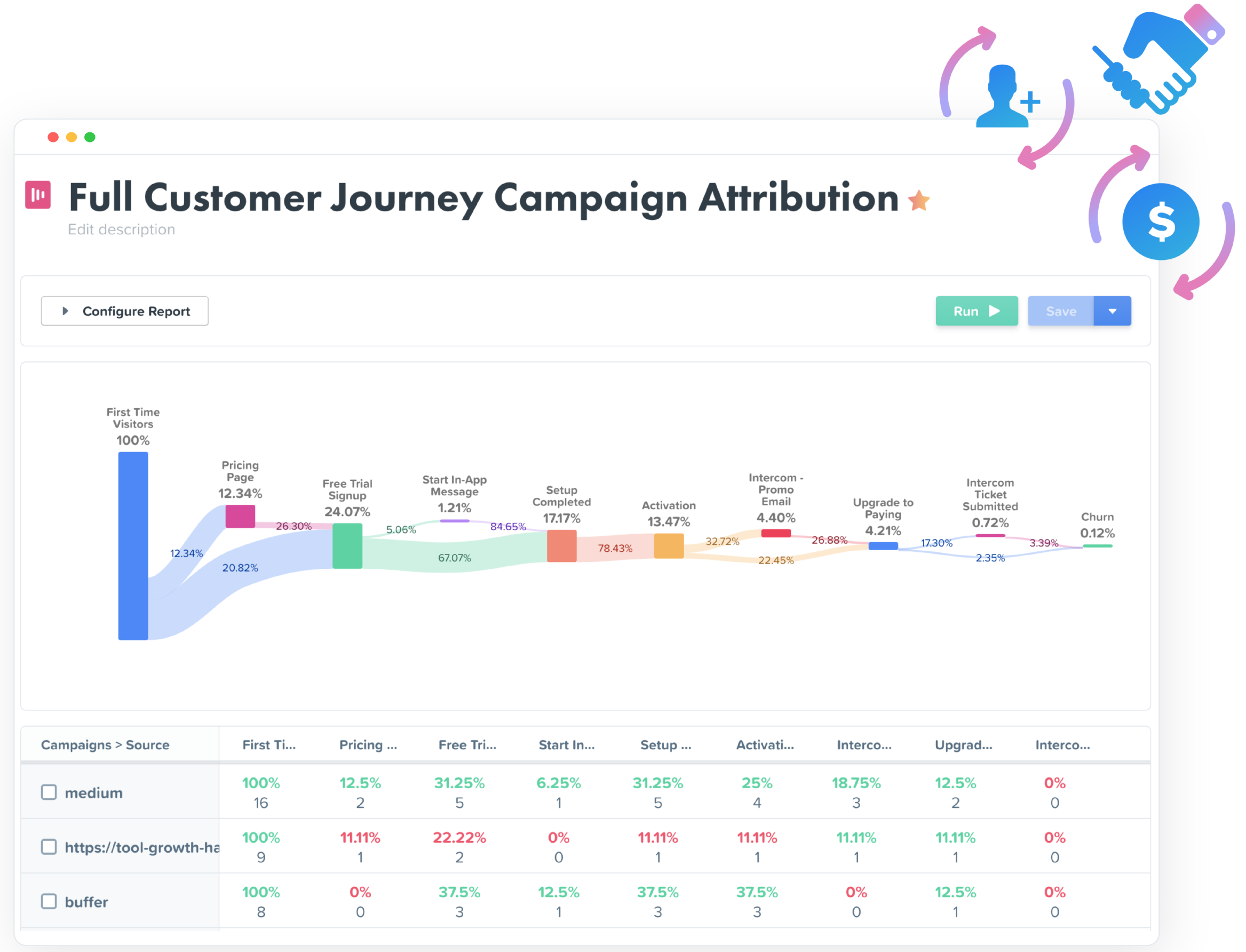
Automate Processes and Engagement
Take Real-Time Action with Built-in Integration Triggers
We’re not a marketing automation platform and we never will be. But, that doesn’t mean we can’t help you automate. We’ve added powerful triggers to each of our native integrations.
Send a message to users based on any engagement criteria, trigger a live chat when customers experience an issue or instantly update a lead status when a prospect calls. How you choose to harness this power is up to you, Triggers open up the door of possibility.
Learn More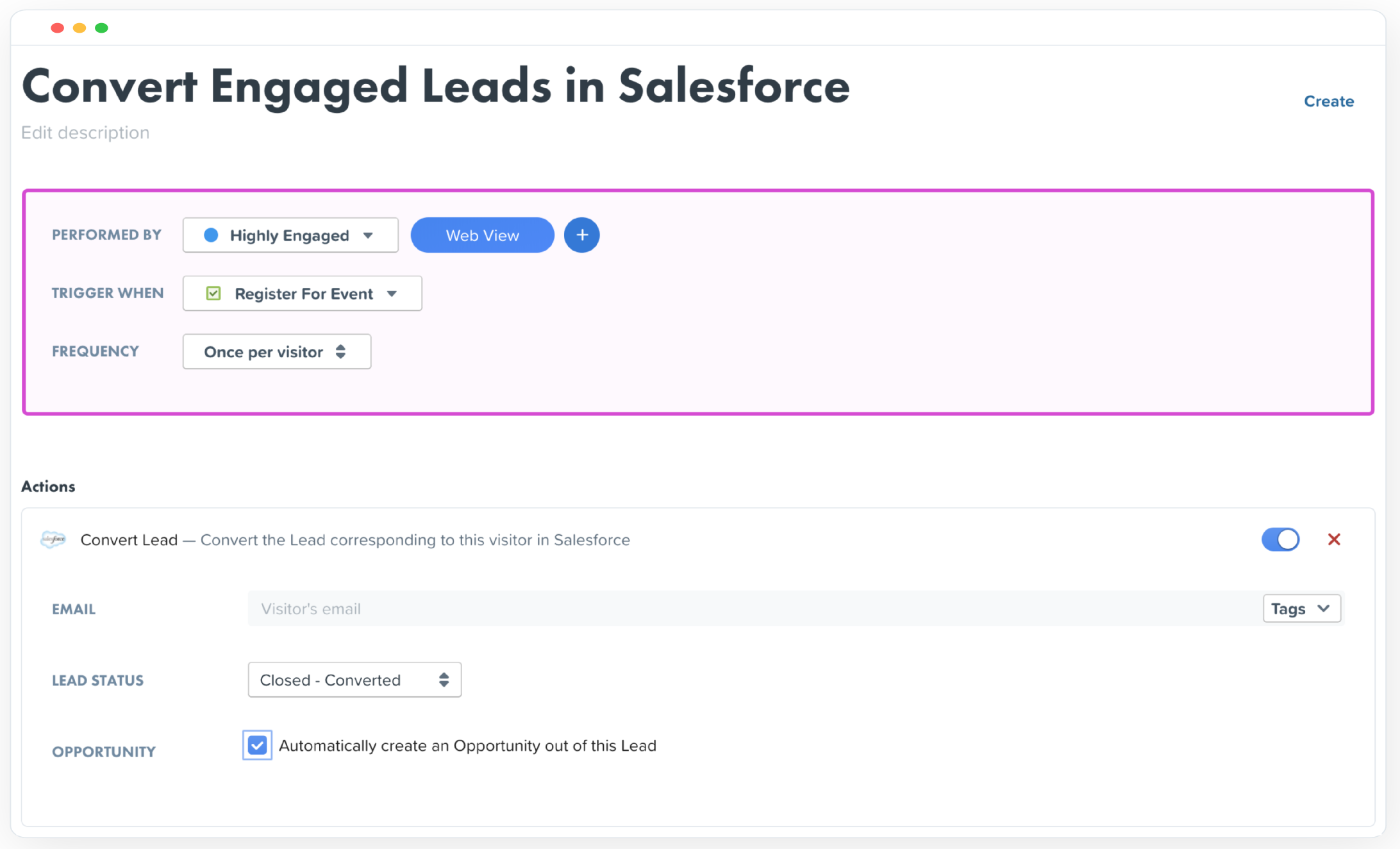
Types of Questions you can answer with Woopra SaaS Analytics
- Where am I losing customers during the onboarding process?
- What does a healthy customer look like in terms of engagement and activity?
- What combination of behaviors and attributes make up our customer personas and how do their journeys tend to differ?
- Which product features drive the most engagement?
- Which product features are driving support tickets?
- For each persona, which touchpoints make the strongest contributions to the probability of conversion?
- How is my subscription revenue trending by plan type and company type?






